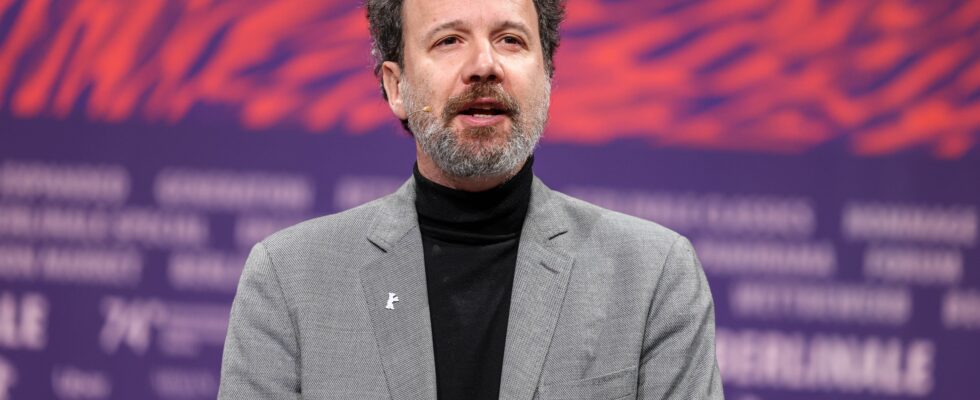Carlo Chatrian, recently appointed director of Italy’s National Cinema Museum, is in Greece curating a selection of films for this year’s Thessaloniki Film Festival themed around ‘monsters.’ The lineup, which features classics like Romero’s *Night Of The Living Dead* and Lee Chang-Dong’s *Peppermint Candy*, has resonated well with audiences. Chatrian, who previously held artistic director roles at the Locarno and Berlin festivals, emphasizes his goal of broadening cinema’s vision and creating a supportive environment for independent filmmakers.
—
Carlo Chatrian, récemment nommé directeur du Musée National du Cinéma d’Italie, se trouve en Grèce pour organiser une sélection de films pour le Festival du Film de Thessalonique cette année, sur le thème des « monstres ». La programmation, qui comprend des classiques comme *Night Of The Living Dead* de Romero et *Peppermint Candy* de Lee Chang-Dong, a rencontré un grand succès auprès du public. Chatrian, qui a précédemment occupé des postes de directeur artistique aux festivals de Locarno et de Berlin, souligne son objectif d’élargir la vision du cinéma et de créer un environnement favorable pour les cinéastes indépendants.
Renowned for his recent appointment as the director of Italy’s National Cinema Museum, Carlo Chatrian, the former head of the Berlinale, is currently in Greece, where he has curated a fascinating selection of films for the repertory section of the Thessaloniki Film Festival.
Under the theme of ‘monsters,’ the curated films include iconic titles such as George Romero’s Night Of The Living Dead and Lee Chang-Dong’s Peppermint Candy. This eclectic collection has resonated well with Greek audiences and perfectly exemplifies Chatrian’s distinctive international programming approach, which has led to his reputation as an “outsider” in the industry.
“I’m really attempting to expand the vision of cinema,” he mentions.
Chatrian served as the artistic director of the Locarno Film Festival from 2012 to 2018, and later held the same role at the Berlin Film Festival from 2020 until his recent departure, which followed the German government’s decision to abolish the festival’s brief dual management model. During his tenure, Chatrian worked alongside Mariette Rissenbeek, who oversaw logistics while he focused on film curation. Notably, over 300 film professionals, including prominent names such as Martin Scorsese and Olivier Assayas, signed an open letter advocating for the extension of his contract.
In the following sections, Chatrian reflects on his experiences leading the Berlinale, describing them as both “challenging” and rewarding, both creatively and professionally. He also outlines his aspirations for Italy’s National Cinema Museum and shares his thoughts on the current state of the festival calendar, which he believes is “messed up.”
The Thessaloniki Film Festival is set to continue until November 10.
Surprisingly, I haven’t found this experience stressful. Certainly, there’s a level of pressure, but it’s genuinely enjoyable. Even during the most intense moments in Berlin, I reminded myself that I was doing what I love. Festivals provide wonderful opportunities to reconnect with friends and discover new films, particularly at an event like this that attracts a diverse audience. The atmosphere is palpable.
This sentiment is deeply integrated into my programming philosophy. My aim is to broaden cinematic perspectives. While I may not appreciate every film equally, each one imparts something personal that I hope resonates with viewers. This understanding evolved during my time in Locarno and Berlin. Programming is not merely about selecting the top films; it’s similar to composing music. It should be diverse yet coherent, beginning with the idea of assembling films from various backgrounds.
My decision to return to Italy was partly to reconnect with my family. Professionally, Berlin was an enriching experience, allowing me to engage with colleagues in a vastly different environment from Locarno. However, it was a strain personally as my family remained in Italy due to COVID-19. We intended to relocate, but the pandemic complicated matters, making it too late for my children to move. This led to constant back-and-forth travel. Additionally, the Museum of Torino is a familiar institution, driven not only by my knowledge of the city but also by connections with former classmates now employed there. It felt like a reunion of sorts. I consistently seek challenges; when I took the job in Berlin, I didn’t know a word of German, and the same applies to Locarno. Now, managing an institution poses a different challenge altogether. The National Museum of Torino ranks among the ten most visited museums in Italy, including the Uffizi, with approximately 700,000 annual visitors, which presents a significant opportunity to engage larger audiences—a primary challenge for curators today.
Certainly, the merging of film with museum exhibitions exists, and we must embrace and leverage this. Screening a film in a museum or gallery isn’t detrimental as long as we can present it to a collective audience. However, I’m concerned about this balance. In Torino, while three theaters operate smoothly, attendance figures aren’t comparable to the museum’s broader visitor numbers. One of my aims is to bridge that gap and harness potential for growth.
My vision for the museum is to create a welcoming space for cinema enthusiasts. I’m unsure if this translates to physical expansion. In my presentation to the museum board, I outlined two key contributions I can offer. First is an international perspective, as the museum is already well frequented. While minor expansions may occur, raising its profile is something we can achieve. Secondly, I want to focus on independent filmmaking, which, while not endangered, is undergoing transformation. This became evident in Berlin, where market pressures intensified, even for established directors. The museum cannot heavily influence that, but it could perhaps
